Interview with Somnath Pal - A Water Lily Hybridizer
Hey, Plantaholics! How are you all doing? I hope you enjoyed the last post about water lilies and are waiting eagerly for more!
Based on your responses, you may have many questions and doubts about growing water lilies at home. Although I possess first-hand knowledge of growing these beauties, I wanted to provide you with concrete pieces of advice. I figured the best way to quelch your doubts would be to share a Q&A session with a world-class water lily expert!
He is one of India’s only two members of the prestigious International Water lily and Water Gardening Society! He is a hybridizer par excellence and a proud owner of a stunning collection of water lilies! So without further ado, here’s the interview with Somnath Pal!
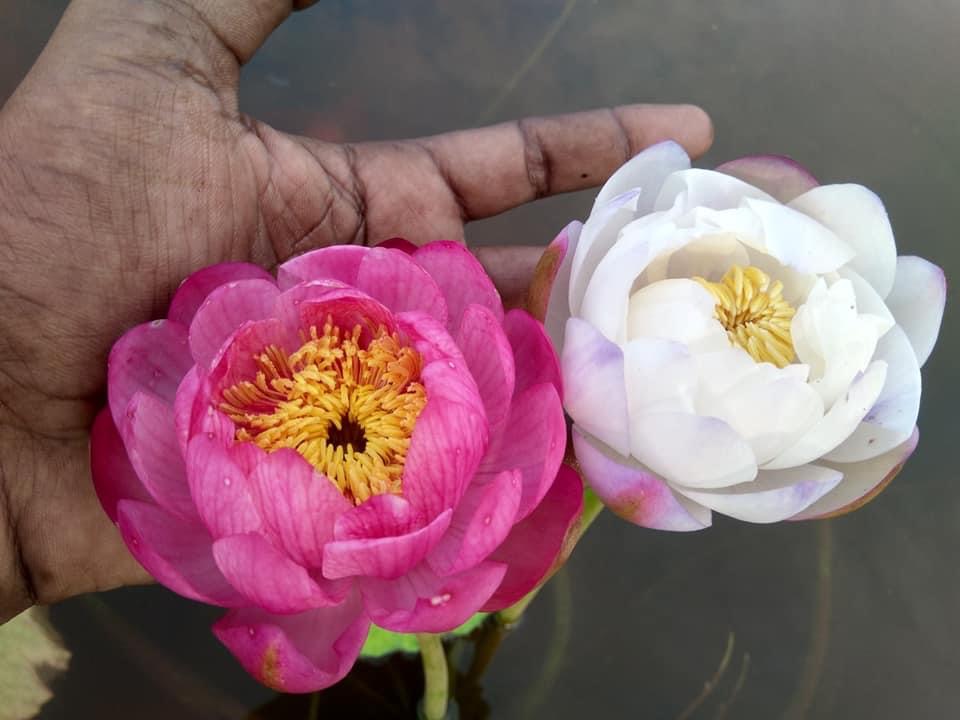
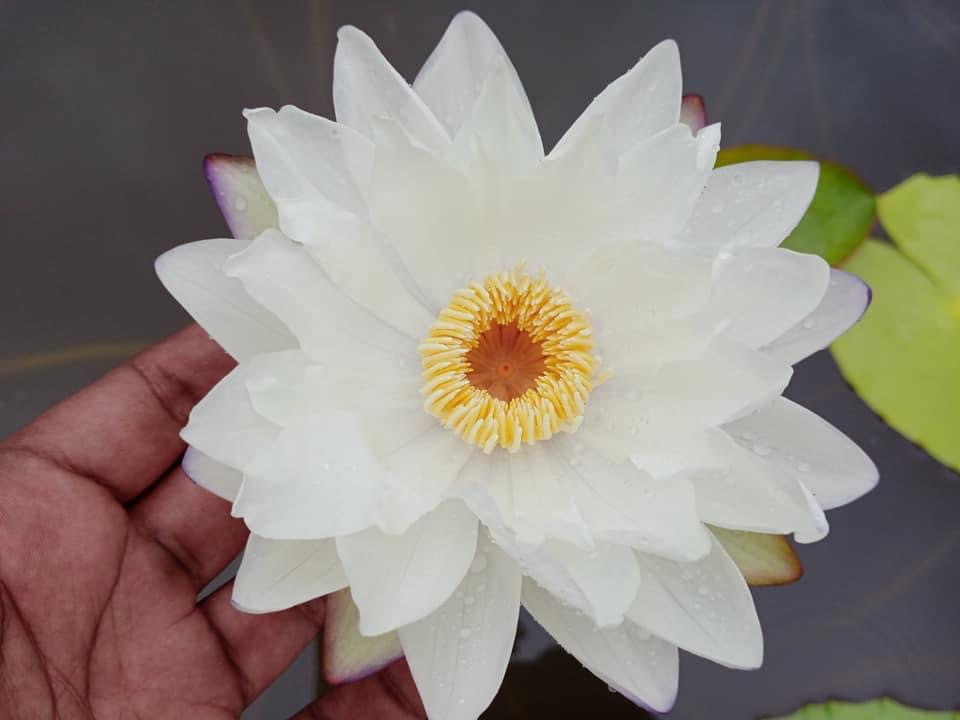


Some stunners from his garden
Q. What is the difference between a water lily and a lotus?
A. Water lilies are in the family of Nymphaeaceae, while lotuses belong to the family of Nelumbo. There is a striking difference between the two. While water droplets can be retained on the leaves of water lilies, lotus leaves are extremely water repellent. When water droplets fall on a lotus leaf, they will either roll off from the surface and drip down or bead up and accumulate in the leaf’s center. This means that the leaves are always dry and free of moisture. Lotus also makes tuber, and it can spread a lot. Additionally, a lotus plant produces tall, round-shaped, standing leaves that emerge above the water surface. Contrarily, the oval-shaped leaves of water lily will just gracefully float on the water surface or right beneath it. Leaves from a baby water lily will be triangular or oval. Lotus leaves will always be round with smooth edges. The underside of the leaves of water lilies may have markings, dots, or different colored veins. Comparatively, the bottom side of a lotus leaf will have a light-green color and feels soft in texture compared to its top surface.
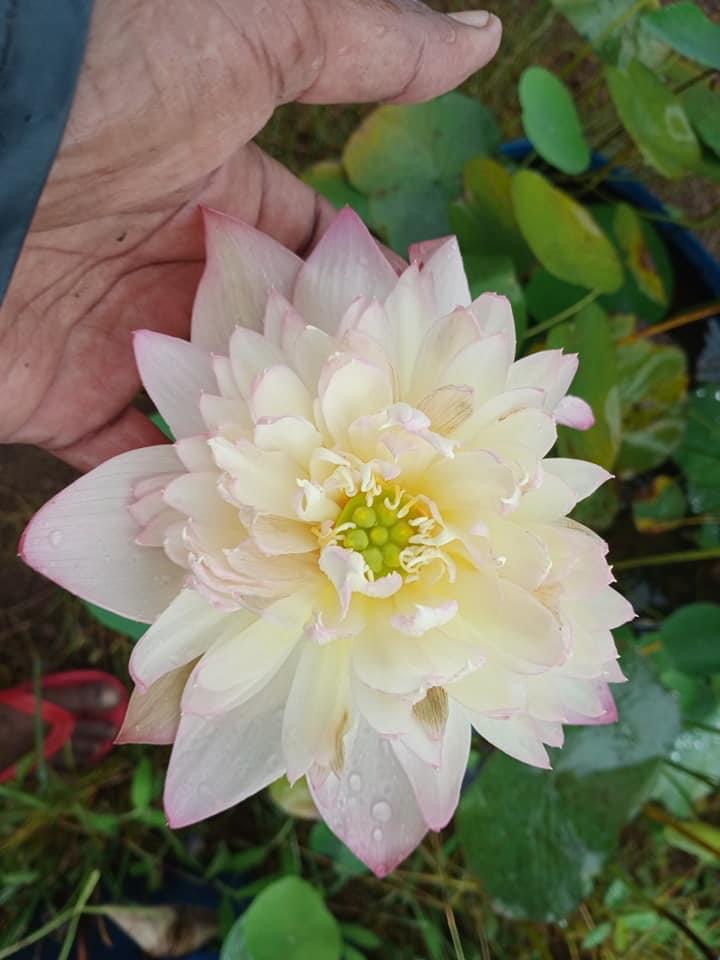 Lotus
Lotus
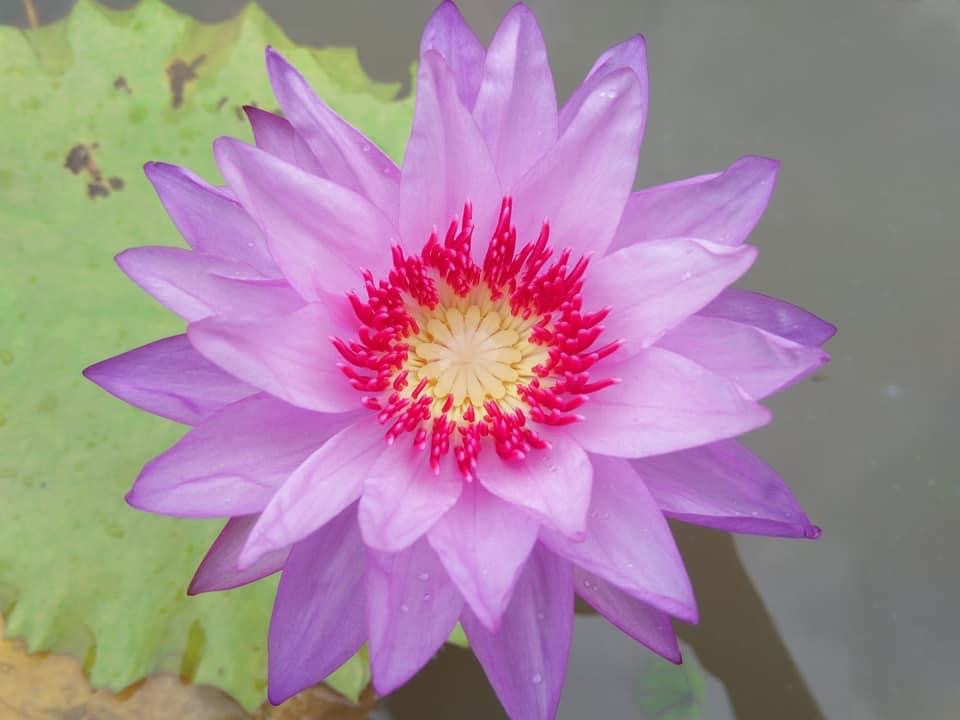 Water Lily
Water Lily
Q. Can people living in apartments grow water lilies or lotus?
A. Water lilies and lotus need direct sunlight for many hours. While water lilies need at least 4 to 6 hours of direct sunlight to grow and bloom, the lotus will need direct sunlight all day to stay flourished and healthy! Anything beyond this will not be suitable for the plants. People may try to grow water lilies with artificial lights, but they will not thrive.
Q. Which water lily would you recommend for beginners?
A. Viviparous tropical water lilies are more proliferous and temperature-tolerant. It will bloom and thrive easily. These water lilies are suitable for beginners.
Q. How big should the pot/container be?
A. Water lilies are giant plants in nature. In the wild, one plant can have 10 - 15 feet spread in diameter. Interestingly, the same plant can also grow and bloom in a 6-inch pot, but the bigger the plant, the bigger the bloom (and vice versa)! You will need two things: a small pot where your actual lily plant will be grown and a large container or tub as a water reservoir. An inner pot of 8-inch wide by 8-inch height will be sufficient, and the tub can be as large as 20-inch to 30-inch in diameter. The reason for growing the plant in a smaller pot is out of convenience. Your plant may require repotting, and growing it directly in the large tub will certainly not be ideal. They will be fairly happy in this size and keep the same depth if possible. Although potting the plant in a large container will be much better for your water lilies, it may ultimately not be convenient for you!
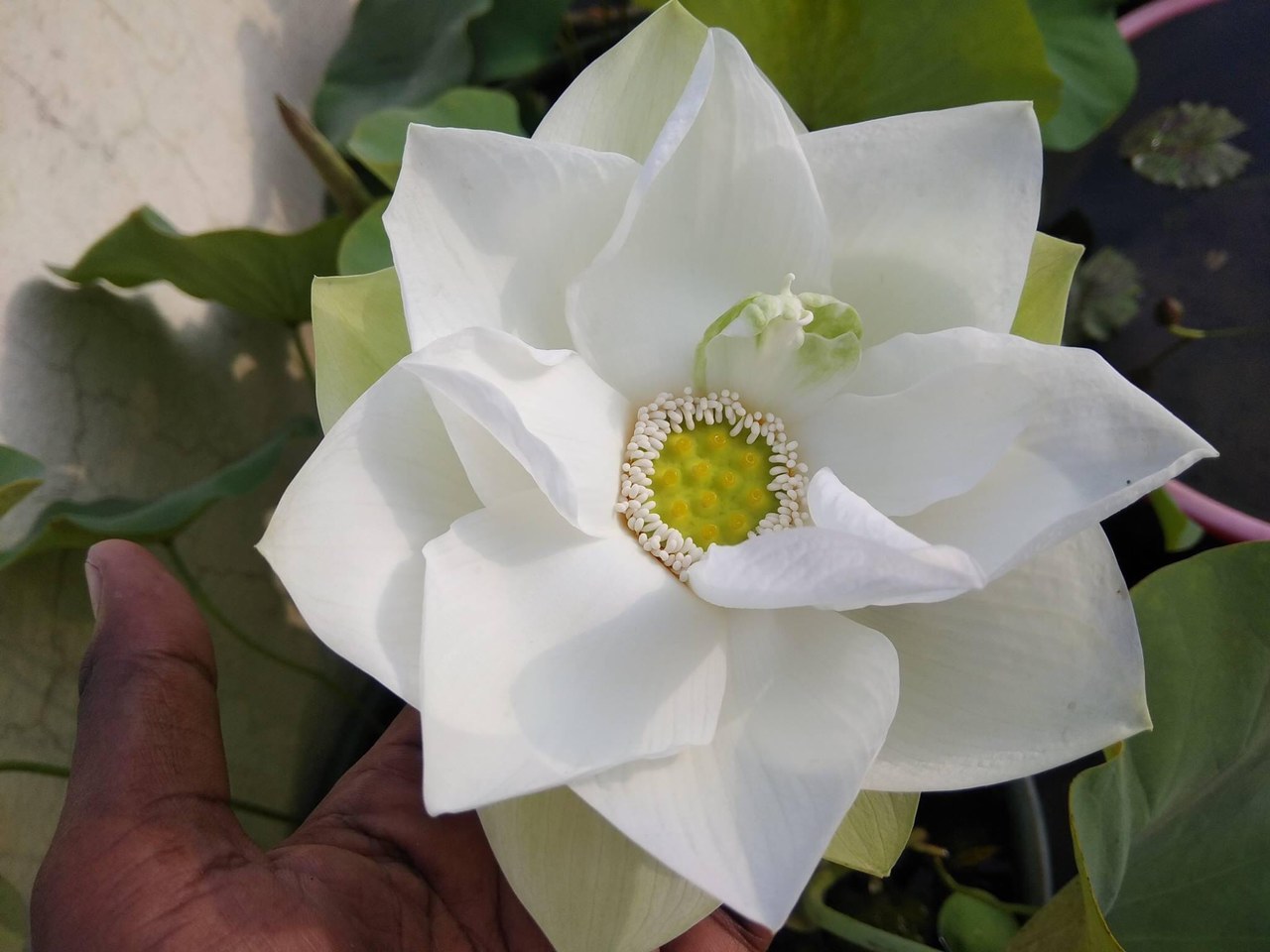
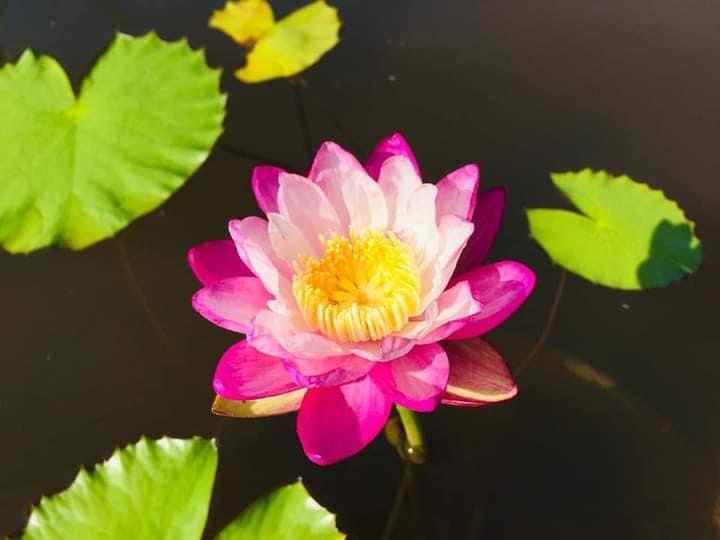
Q. How frequently should we change the water?
A. Water should always be clean. While I don’t expect the container to be completely absent of mosquito larvae, a certain degree of cleanliness must be maintained. Check that the water is clean by making sure it does not emit any foul smell and clear up any rotting plant parts. Always overflow the water so dust particles that settle on the water surface will be washed away. Overflow the water daily or every other day, and remember that you certainly don’t need to completely change the water!
Q. What fertilizers should be used and how frequently?
A. It’s best to use good clay and black cotton soils and amend them with vermicompost or some organic material rather than supplementing with fertilizers. Remember that all chemical fertilizers such as NPK and slow-release fertilizers come with side effects, and you may not even understand how harmful they are. It’s best to keep things simple and organic. While the pot size is crucial, coupled with clean water, quality medium, and full sunlight, you’ll have a healthy plant!
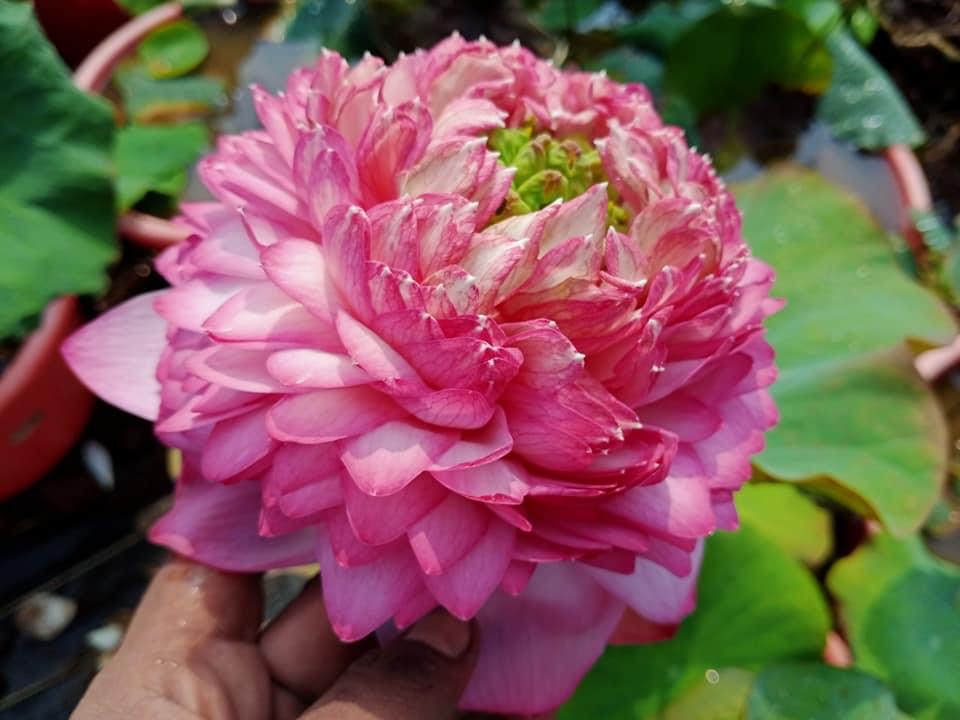 A thousand petal lotus from his collection
A thousand petal lotus from his collection
I hope with all the expert tips shared, you will definitely get some beautiful water lilies and lotus. Best of luck